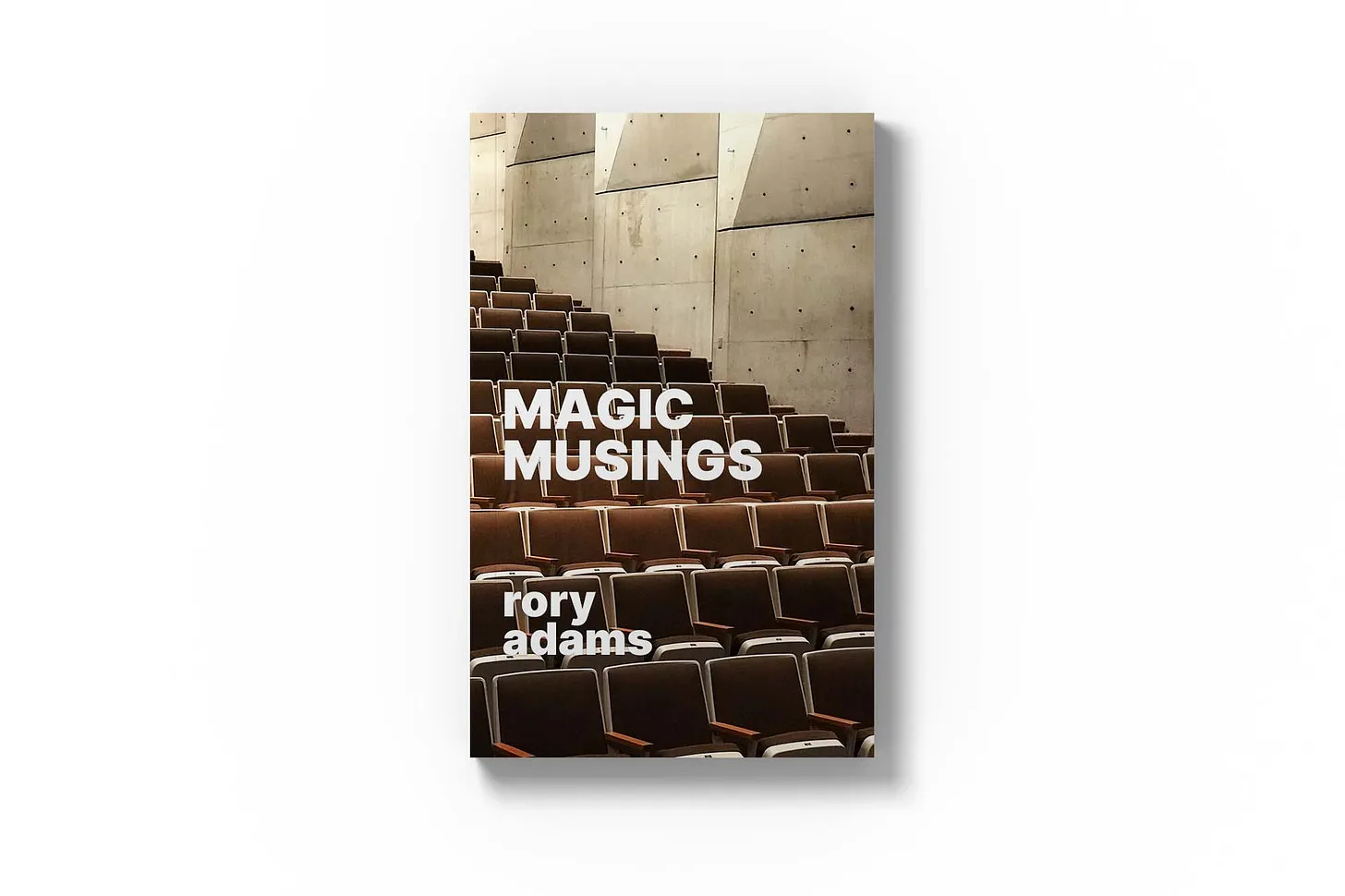An Essentialist Look At The Cross Cut Force
Every Magician Should Perform This Version

There’s a good old clip of Aaron Fisher teaching the cross-cut force on YouTube. The method of forcing a playing card is simply the easiest and is often favoured by big-name magicians like Penn & Teller.
It can be referred to as the crisscross force, as well as the cross-cut force and the crossing-the-cut force. The bottom line is that the spectator cuts the deck, and you ‘mark where they cut’ by placing the remaining packet on top of the cut section at an angle.
With the correct amount of timing misdirection, the magician can later lift the top section to reveal the card the spectator cut to—either the bottom card in the top packet or the top card of the packet on the table.
It’s a brilliant, brilliant method for forcing a card with a regular deck of cards. In fact, I would go so far as to say it’s the best method for forcing with an ordinary deck of cards. Why? It’s so goddamn simple and easy.
You can ditch the sleight of hand and focus on the shit that really matters—like your performance. Move monkeys do not like it when I say this, but if the aim of your sleight of hand is for it to be invisible, and there’s an easier option that requires no sleights—take the easy option.
I’ve written and produced television magic for ten years now. You learn quickly to always choose the easy option. It saves time on the shoot day, relieves pressure on the talent, reduces the risk of failure and ultimately makes you as the writer/consultant/producer look good (and get more work).
I say it saves time on the shoot day because a method that is easier to perform can sometimes take more time to build.
In recent years, I’ve been trying to embrace an essentialist mindset in every aspect of my life—including magic. A number of big-name magicians have been passing around this book: Essentialism – The Disciplined Pursuit Of Less. In many ways, the book is about minimalism but with better branding.
In practice, you look at anything you’re doing and ask yourself, “Is this absolutely essential?” The author is actually related to a magician in the industry, though I only found this out when I recommended the book to that magician. A few magicians had already recommended it to me.
Of course, I misuse the book; instead of simplifying my life—I’ve used essentialism to do more things. I’m able to start a Kickstarter project, build and run a mindfulness app, write on TV shows and run this newsletter because I only do what is absolutely essential for each project. I recommend the book.
So, how would an essentialist embrace the cross-cut force? Well, they’d certainly use it to force a playing card. What next? What’s the most essential ending to a card force? What’s a method that works by itself and in collaboration with the cross cut force?
—
The spectator cuts the deck.
The spectator marks the cut.
The magician steps back (adding time misdirection).
The spectator lifts the top pack.
They peek at the bottom card they cut to.
The spectator squares up the deck.
The magician gestures with their hands (timestamping the magic).
The spectator spreads the deck face up.
Their chosen card has vanished.
The magician points to the card box (drawing a line for the magic).
Inside the box is their chosen card.
The spectator is suitably impressed.
—
So it’s a hands-off trick. The spectator chooses a card, which vanishes and ends up in the box without the magician touching anything. You force the card with the cross-cut, and there’s a duplicate ready and waiting inside the box.
Don’t be lazy with your duplicate — add a subtle mark to both cards. It frustrates me when magicians use two perfectly new-looking cards for duplicates.
To make the forced card vanish, rough the back of the top card in the deck with roughing spray, roughing stick or even just a crayon. When the cross-cut force is squared up, this roughed-back card will sit perfectly below the force card. Due to the roughing, the force card will be hidden when you spread the deck.
It’s a nice addition because the cross-cut actually acts as a method for the vanish, bringing the rough card and force card together in the deck.
✌🏼Hey! This essay is featured in my new book ‘Magic Musings.’ If you want the limited edition book filled with magic essays like this one — buy the book.

